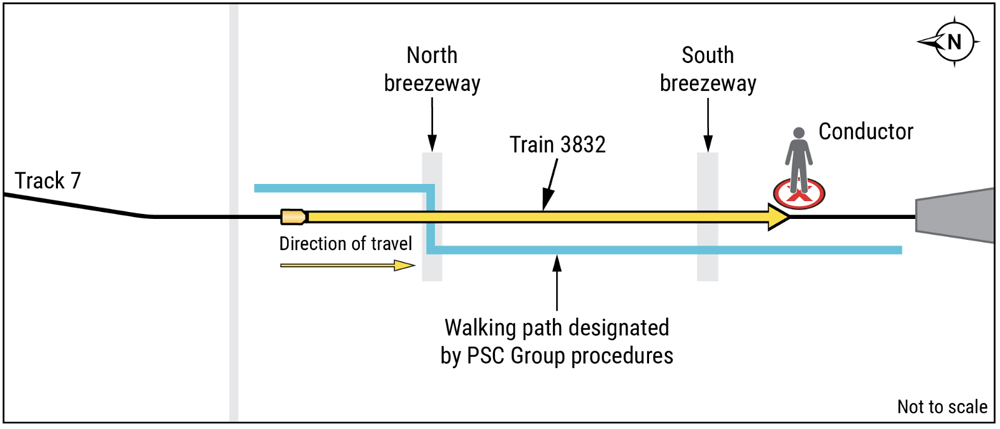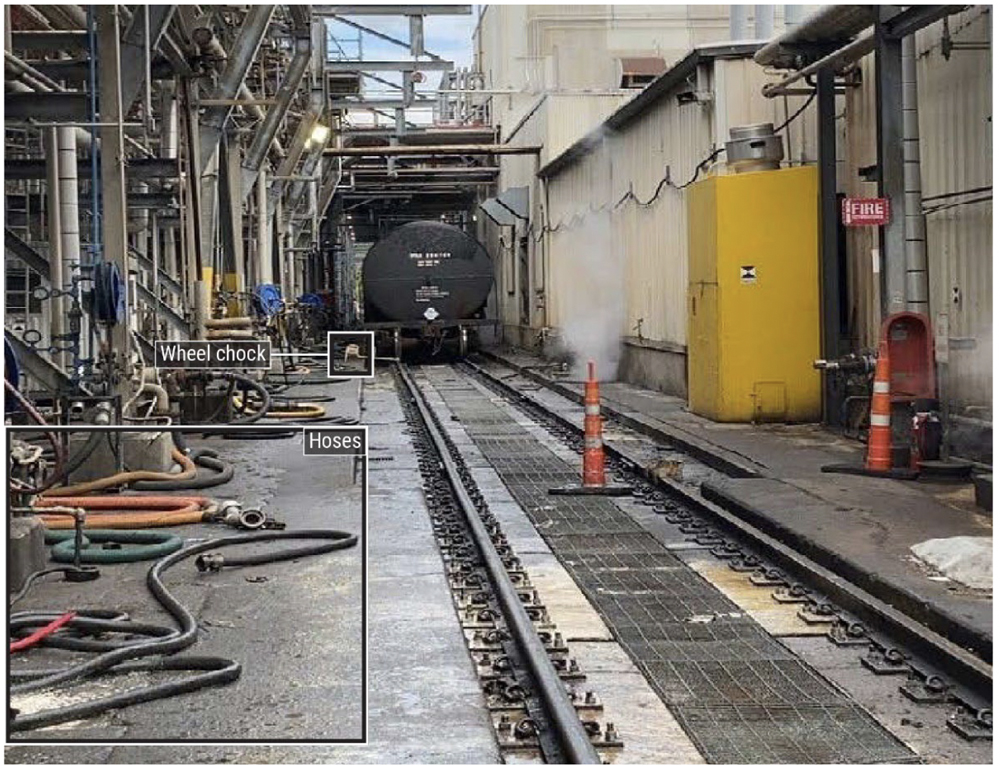
WASHINGTON — A conductor entered the “red zone” where there was an increased likelihood of being struck by equipment, and an engineer did not follow operating procedures to stop his train after failing to hear instructions from the conductor, the National Transportation Safety Board said in determining the probable cause of the fatal Oct. 28, 2022, incident involving a PSC Group conductor switching an ExxonMobil plant in Beaumont, Texas.
At the time, the Jefferson County Sheriff’s Office identified the man killed as 66-year-old Richard Garza [see “Man killed in Texas railcar accident,” Trains News Wire, Oct. 29, 2022].
The incident occurred at 12:03 a.m. involving a train of one locomotive and 19 cars for PSC, which provides rail switching services for the ExxonMobil lubricants plant. There were no witnesses and it was not captured by video. The train was working on track 7 of the facility and the conductor had radioed for the engineer to reverse five carlengths, then called three carlengths. No further communication was heard; after a sudden decrease in brake-pipe pressure, the engineer made an emergency brake application and then tried to contact the conductor, who was found deceased by an ExxonMobil worker. PSC procedures call for the conductor to call out distances at hal0-car intervals beginning with two carlengths to the end of the move.
PSC subsequently revised its procedures for track 7, which has a fairly constrained walking area, to require conductors to take a position at the final carstop location and face the movement; walking alongside the movement is no longer permitted. ExxonMobil cleaned up the walking area, added rail crossing signs at breezeways, and increased lighting.
The full report is available here.















I thought everyone used the same rules when switching and using car signs. If my engineer cannot see me, the route, etc, like in a shove move, for example, I tell him to backup 20 cars to a joint, he’s slowing down and coming to a stop 1/2 the distance I gave so in this case would be 10 cars. Car signs don’t keep going down by one half but instead go from say, 20 to 15 to 10 to 8 to 5 to 3 to 2 to 1, etc. By the time he’s down to 2 cars he’s already going pretty slowly.